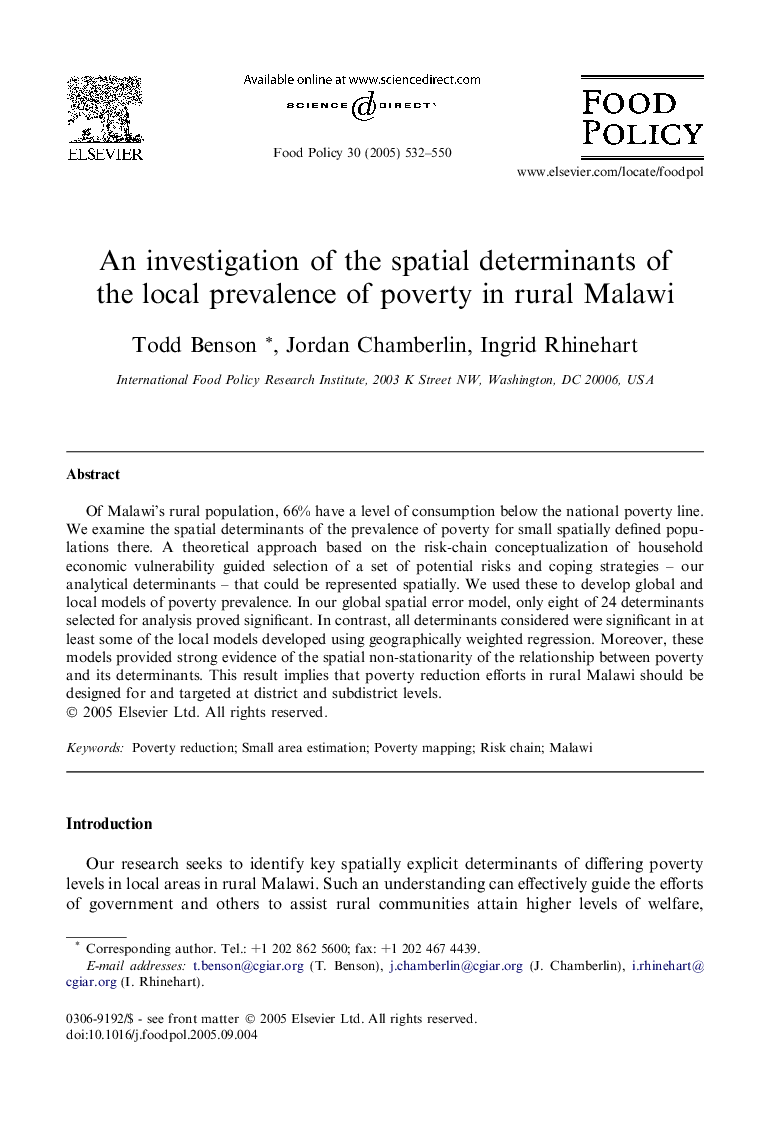| Article ID | Journal | Published Year | Pages | File Type |
|---|---|---|---|---|
| 9551499 | Food Policy | 2005 | 19 Pages |
Abstract
Of Malawi's rural population, 66% have a level of consumption below the national poverty line. We examine the spatial determinants of the prevalence of poverty for small spatially defined populations there. A theoretical approach based on the risk-chain conceptualization of household economic vulnerability guided selection of a set of potential risks and coping strategies - our analytical determinants - that could be represented spatially. We used these to develop global and local models of poverty prevalence. In our global spatial error model, only eight of 24 determinants selected for analysis proved significant. In contrast, all determinants considered were significant in at least some of the local models developed using geographically weighted regression. Moreover, these models provided strong evidence of the spatial non-stationarity of the relationship between poverty and its determinants. This result implies that poverty reduction efforts in rural Malawi should be designed for and targeted at district and subdistrict levels.
Related Topics
Life Sciences
Agricultural and Biological Sciences
Food Science
Authors
Todd Benson, Jordan Chamberlin, Ingrid Rhinehart,
